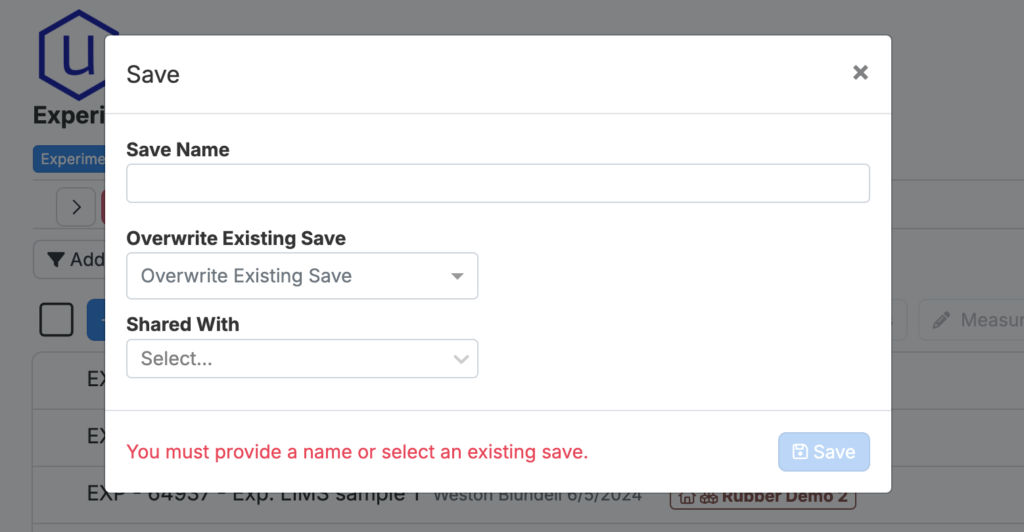A key advantage of Uncountable’s structured data is the searching and filtering capabilities it enables. Searching and filtering is available for many entities within Uncountable—ingredients, measurements, lab requests, inventory, and more—but the most common use case is searching and filtering against your database of experiments.
How to Search and Filter Experiments
When performing basic or filtered searches against experiments, first verify that you are in the appropriate project. This will determine the breadth of experiments that will be considered in your query.
For example, navigate to the All Projects view if you would like to search against all experiments in your material family. Alternatively, navigate to a specific project (parent or child) if you would like to narrow the breadth of your search.
You can perform a simple keyword search by entering characters in the designated text box on the dashboard page. Uncountable will return experiments with matching names.
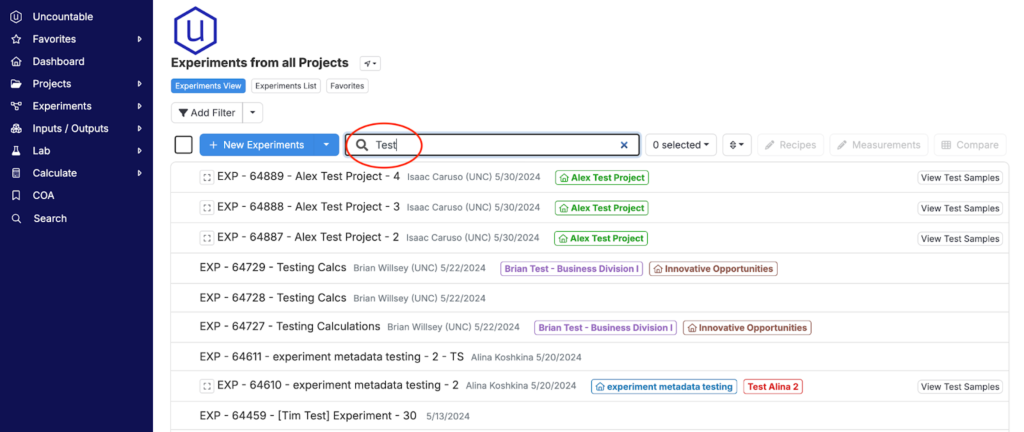
Adding Input Filters
For a more robust search, add filters. Filtered searches allow you to surface experiments based on characteristics beyond experiment name. For example, to find all recipes that use a specific ingredient, i.e. Polymer A, set an Inputs filter for Polymer A to be “exists”.
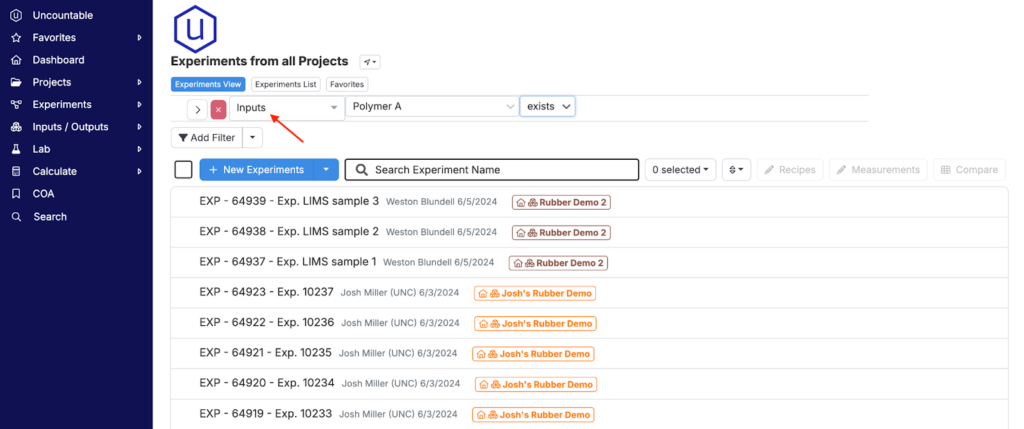
You can further narrow your search by specifying a minimum threshold, maximum threshold, or range. For example, you could use filters to find all recipes that use at least 5 grams of a specific ingredient, i.e. Polymer A. To do so, set the Inputs Filter for Polymer A to be “> 5”.
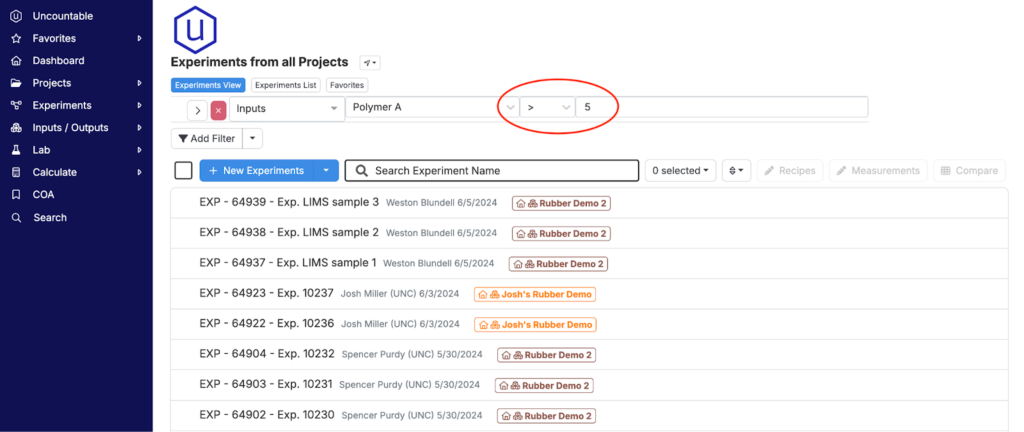
Filter Settings
When filtering by ingredients, use the available selections to specify how Uncountable should interpret your comparison values (i.e. 5).
- Use values on a percentage basis: This will treat your comparison value as a percentage of the total recipe amount, as opposed to the quantity basis, i.e. mass (g).
- Use actual quantities: Uncountable allows users to record actual ingredient amounts used at time of sample creation in addition to set ingredient amounts captured by the formulated recipe. Checking this box tells Uncountable to reference the former.
- Include chemically similar ingredients: Toggling this will broaden your search to include experiments that involve substances with similar chemical compositions to the ones you’re searching for.
- Step name(s): Adding this filter allows you to narrow down your search to specific steps within an experiment or process (i.e. Culturing, Evaporation).
- Quantity basis: The quantity basis can be set to mass, volume or moles.
- Calculations: Filter against calculated values associated with an ingredient as opposed to the ingredient amount. For example, the carbon cost of Polymer A in a recipe.
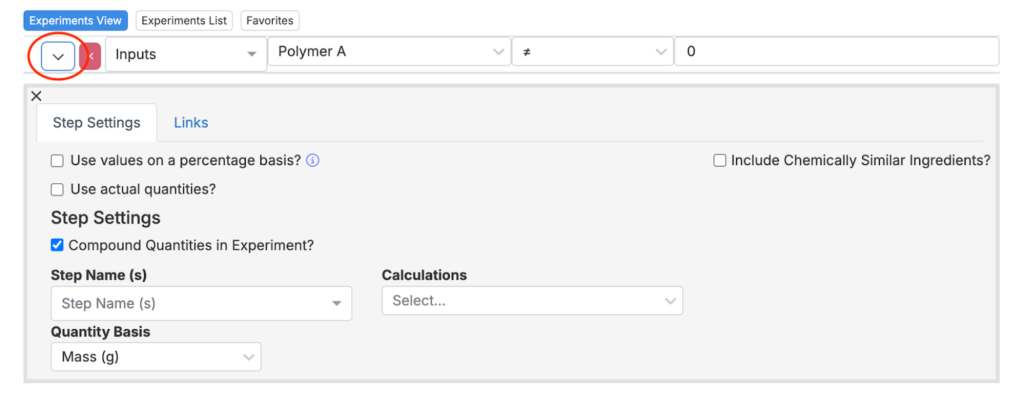
Adding Output Filters
You can search based on measurement values (Outputs) as well. For example, add a filter for experiments with a measurement recorded for Tensile Strength.
Note: If an output has default condition parameters, these parameters are also applied when creating filters using that output.
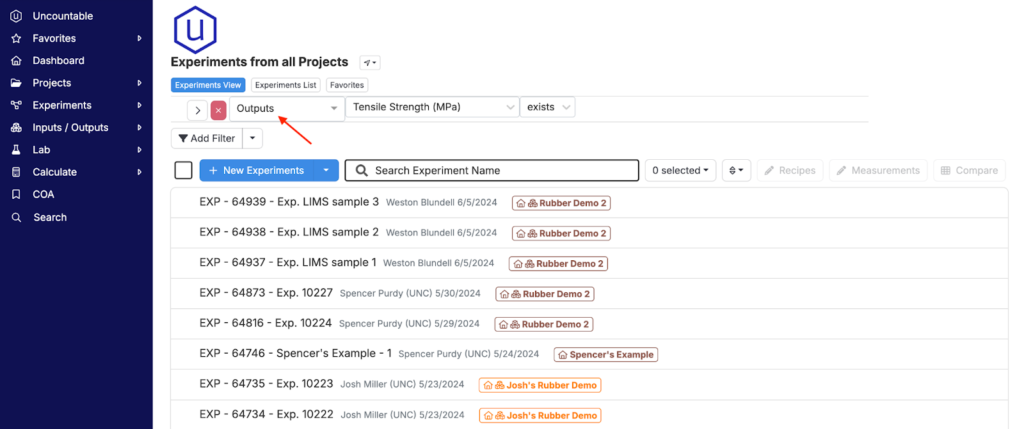
Similar to the ingredient filter, you can narrow your search by specifying a minimum threshold, maximum threshold, or range. For example, filter for all experiments with Tensile Strength values of greater than 16 MPa.
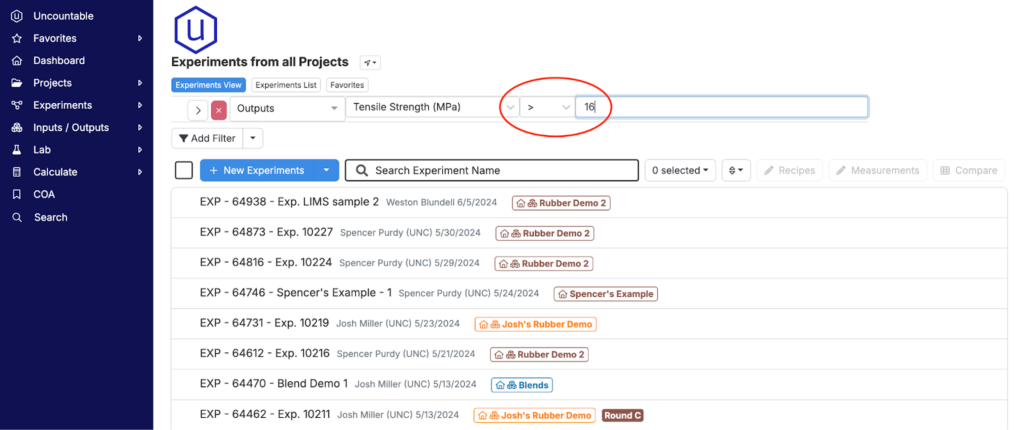
These are just a few examples. The criteria in a filtered search can reference all types of data related to the experiment. You’ll see the option to reference metadata (Experiment), lots, calculations, and more. For instance, you can also use a filtered search to find all experiments created by a specific individual.
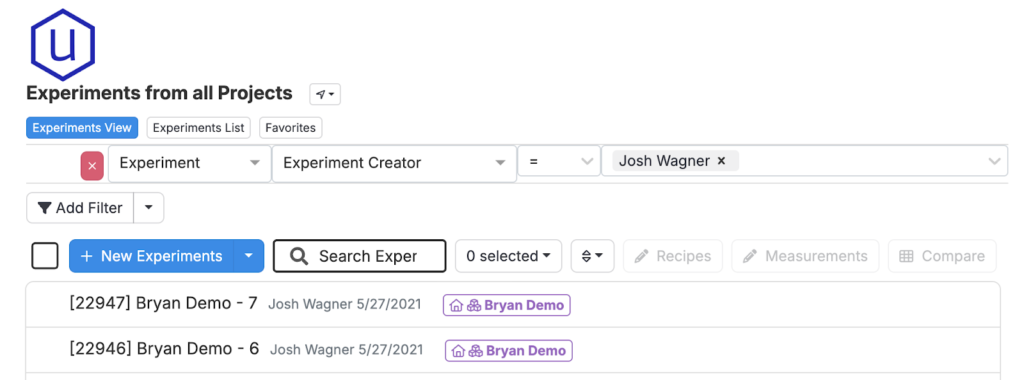
Layering Filters
You can also create multi-layered logic in your search criteria. Uncountable will interpret “stacked” filter rows as AND logic (all rows must be satisfied) while separated filter groups will be interpreted as OR logic (all rows from at least one filter group must be satisfied).
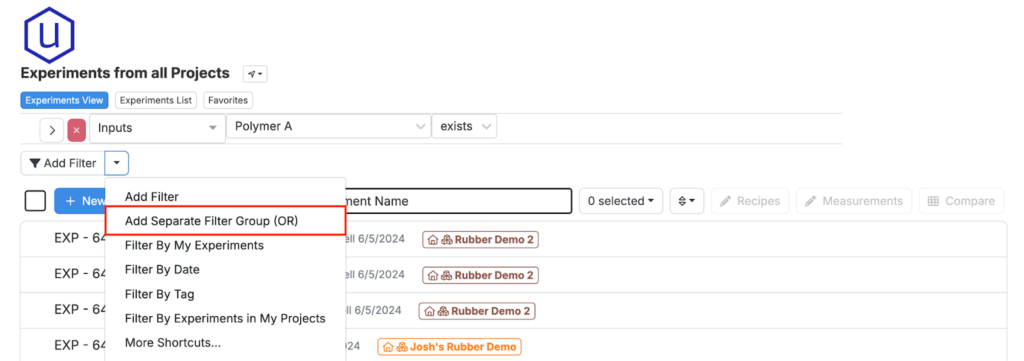
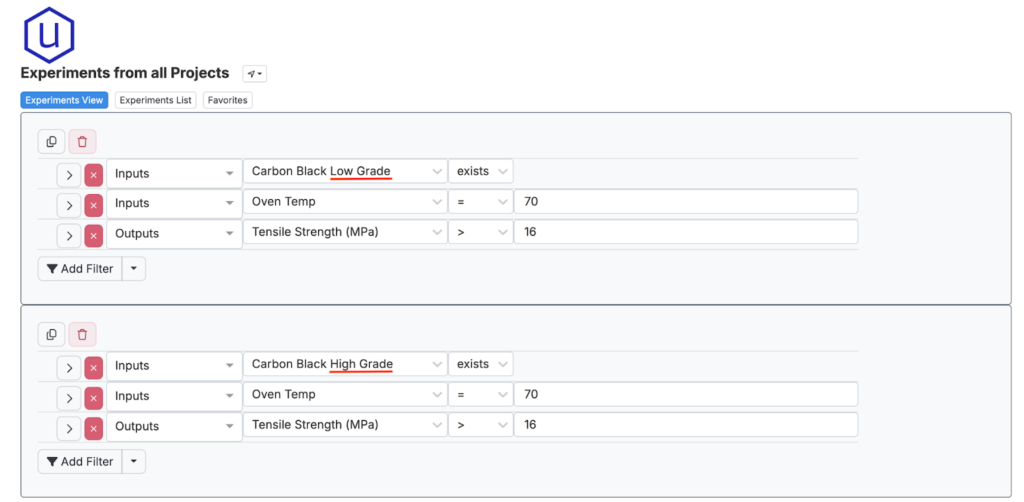
Filter Conditions
When setting your filters, it’s possible that an additional modal will appear. If this happens, Uncountable is prompting you to further specify the criteria of your search.
The fields in this modal are optional and can be left blank. For example, when referencing the output Tensile Strength in a filter, selections pertaining to condition parameters will be displayed. You can use the Select Conditions field on the left, which will offer a drop-down of condensed condition parameter combinations recently assigned to the Tensile Strength output, or you can manually specify values per condition parameter on the right.
If you ignore these fields altogether, Uncountable will perform a generic search against all Tensile Strength measurements, regardless of associated condition parameter values. Alternatively, if you specify Aging Temp at 100° C, Tensile Strength measurements at Aging Temps other than 100° C will be ignored.
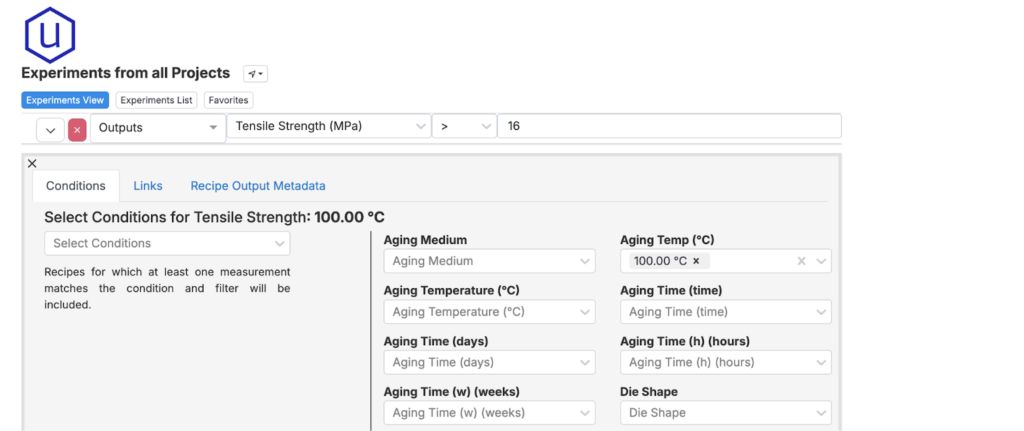
Sorting Search Results
By clicking on the ⇳ icon next to the search bar, you will see the option to sort experiments by date, name, last edit, tag, and ingredient (custom sort).
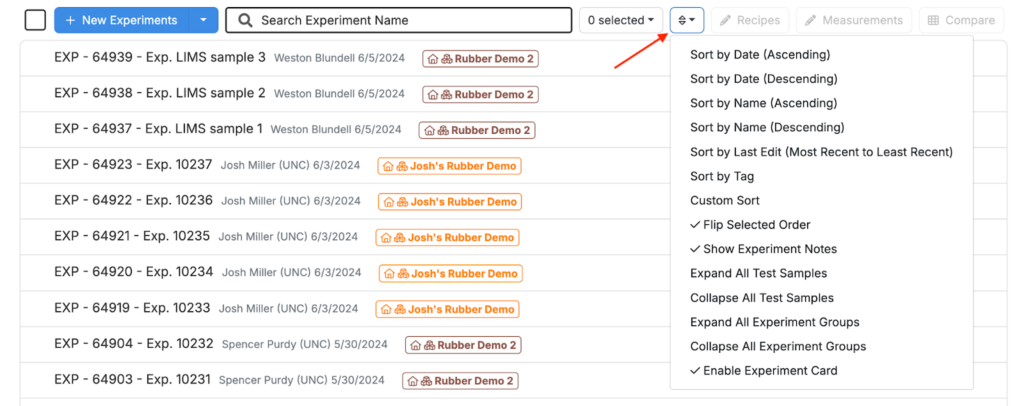
Saving Searches
Save searches for future use by clicking on the down arrow attached to the Add Filter button and selecting Save Search. Use the same drop-down menu to load your saved search moving forward.
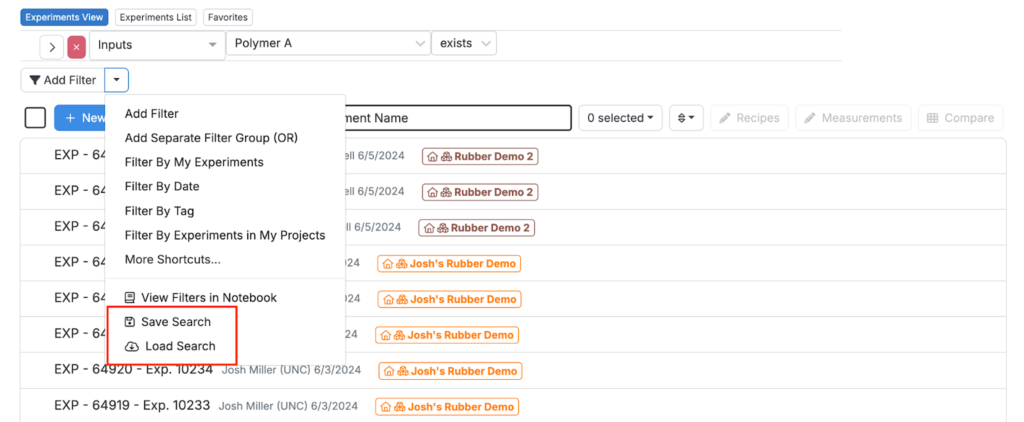
When saving, a modal will appear prompting you to name your search and/or overwrite a previously saved version of the search. You will also determine which users, if any, you would like to make the search accessible to.
